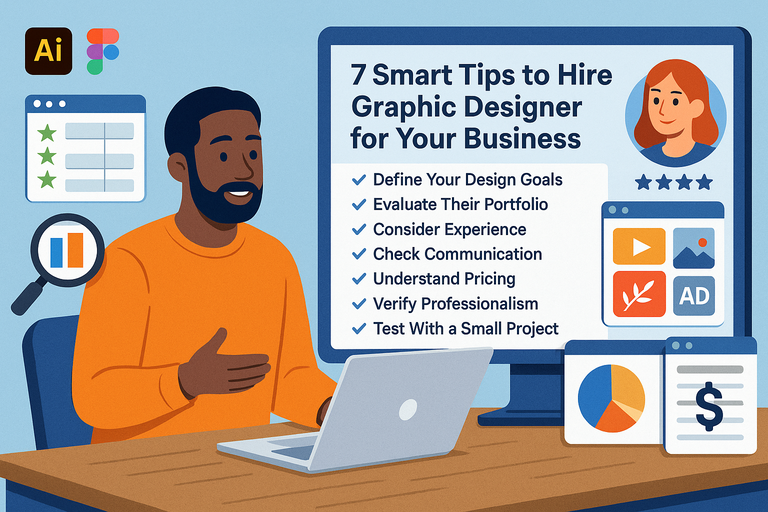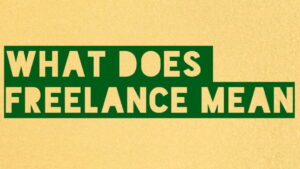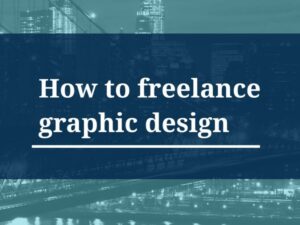Table of Contents
When you decide to hire graphic designer for your business, the stakes are higher than just picking someone who can make things “look pretty.”
The right choice can shape your brand identity, improve customer trust, and even increase sales. But how do you know which designer is the right fit for your business needs?
This guide will walk you through seven smart tips that make the hiring process easier and far more effective.
1. Define Your Design Goals Before Hiring
Before you hire a graphic designer, it helps to know exactly what you want them to create. Without a clear direction, even the best designer can struggle to meet your expectations.
Think of it like hiring a contractor without a blueprint — you’ll end up with endless revisions, wasted money, and a lot of frustration.
Clarify What Type of Projects You Need Completed
Start by making a list of the design work you actually need. Do you need a logo that captures your brand personality? Social media graphics to keep your feeds fresh?
Packaging design that makes products stand out on shelves? Each type of project requires a different approach and often a different skill set.
For example, a designer who specializes in branding might not be the best fit if you mainly need infographics for data-heavy reports.
I suggest writing down your top three design priorities and creating a “must-have” list before you even post a job ad. This will help you weed out candidates who simply don’t match your needs.
Decide Between Ongoing Work or One-Time Projects
Not every business needs a full-time designer. If you’re launching a campaign or refreshing your website, a one-off project might make more sense. But if you’re running a business with constant design needs — think weekly social posts, newsletters, or ads — an ongoing relationship is worth investing in.
I usually recommend testing the waters with a single project. If the designer delivers great results, you can extend the partnership into a retainer agreement. This gives you the flexibility to scale up without committing too early.
Outline Your Brand’s Visual Identity and Voice
Designers aren’t mind readers. You’ll need to give them a sense of your brand identity: your colors, fonts, tone, and overall “vibe.” If you don’t have a brand style guide, now’s the time to start building one.
Even a simple one-page document that explains your personality (playful, professional, luxury-focused) can make a huge difference.
Pro tip: Collect examples of visuals you like and dislike. Tools like Pinterest boards or a shared Google Drive folder make it easy to show designers the kind of direction you’re aiming for. This prevents miscommunication and speeds up the design process.
2. Evaluate Their Design Portfolio With Purpose
Every designer will show you a portfolio, but how you review it matters. Too many business owners glance at a few pretty pictures and call it a day.
A smarter approach is to dig deeper and evaluate whether their work truly fits your goals.
Look for Style Versatility and Consistency
A strong portfolio should show both variety and control. You want a designer who can adapt to different styles but still deliver clean, professional work every time.
If every project looks identical, they may lack versatility. On the flip side, if their work feels all over the place, they might not be consistent.
What you’re looking for is balance — someone who can adapt to your brand without losing design quality.
Assess How Their Work Aligns With Your Industry
Design in tech looks very different from design in food or fashion. A great designer for a law firm might be a poor fit for a gaming startup.
Look at their past projects and ask yourself: Would this style resonate with my target audience?
For example, if you run a health and wellness business, you’ll want a designer who understands calming tones, approachable typography, and natural imagery.
Don’t be afraid to ask them how they would translate their style into your specific industry.
Check for Creativity in Problem-Solving, Not Just Looks
Good design isn’t about decoration — it’s about communication. When reviewing a portfolio, pay attention to how a designer solved the problem, not just the final image.
Ask them to explain the story behind a project: What was the client’s challenge? How did they approach it? Did the design improve conversions, engagement, or brand recognition?
A designer who can articulate this process is far more valuable than one who just says, “Here’s a nice logo.”
3. Consider Experience and Specialization
Experience matters, but it’s not the only factor when you’re looking to hire a graphic designer.
You want someone whose background matches your business needs without overlooking the fresh ideas newer designers might bring.
Prioritize Industry-Specific Knowledge When Relevant
A designer with experience in your industry will already understand your audience and market challenges.
For example, a designer who has worked with SaaS companies knows the importance of clean UI design and clarity, while someone who’s done a lot of restaurant branding knows how to make menus visually engaging.
That said, don’t make this a dealbreaker. Sometimes, a designer from outside your industry can bring a fresh perspective that sets your brand apart.
Compare Generalists Versus Specialists for Your Needs
Generalist designers can handle a bit of everything — logos, ads, web graphics. Specialists, on the other hand, go deep in one area like packaging or UX. Which you choose depends on your workload.
If you’re a small business with diverse needs, a generalist may save you from hiring multiple people.
If your brand revolves around a specific channel, like an app interface or product packaging, hiring a specialist is worth the investment.
Weigh Experience Against Fresh Creativity in New Talent
A seasoned designer brings reliability and polished expertise, but newer designers often bring bold ideas and modern approaches.
I’ve seen businesses thrive by taking a chance on up-and-coming talent who charge less but deliver innovative results.
The trick is balance: If you’re testing a new campaign or want fresh ideas, newer talent might be a better fit. If you’re rebranding or doing high-stakes projects, lean toward experience.
4. Check Communication and Collaboration Skills
Hiring a graphic designer isn’t just about talent — it’s about how well they work with you and your team.
Even the most skilled designer can cause frustration if they can’t communicate their ideas or listen to yours.
Test How Clearly They Explain Design Decisions
A good designer doesn’t just say, “I picked this font because it looks nice.” They should be able to walk you through their thought process in plain language: Why a certain font conveys trust, why certain colors encourage excitement, or why white space improves readability.
When interviewing, ask them to explain a project from their portfolio. If their explanation feels clear, logical, and easy to understand, that’s a good sign.
If it’s vague or overly filled with jargon, you might end up with a communication barrier down the line.
Evaluate Responsiveness During the Hiring Process
The way a designer responds to your emails, messages, or calls before you hire them is often the way they’ll respond after you do.
If they take a week to reply to a simple question, imagine how that plays out when you’re working on a tight campaign deadline.
I suggest paying attention to:
- How quickly they acknowledge your messages.
- Whether they give complete answers or just half-responses.
- If they confirm timelines and follow up without you chasing them.
Ensure They Can Work With Your Team and Non-Design Staff
A graphic designer doesn’t work in a bubble. They’ll often need to collaborate with your marketers, developers, or even customer service reps. The best ones can take feedback without defensiveness and adjust their work accordingly.
I’ve found that doing a “mock meeting” with your team before hiring helps. Share a sample project and let everyone ask questions.
Watch how the designer reacts — are they patient, open, and willing to adapt, or do they push back without listening? This tells you everything about how smooth the partnership will be.
5. Understand Pricing Models and Your Budget
Money conversations can feel uncomfortable, but being upfront about costs will save you from stress later.
When you hire a graphic designer, you need to understand not only what they charge but how they charge.
Compare Hourly Rates Versus Project-Based Pricing
Designers often use two models: hourly or per-project. Hourly is great for small, unpredictable tasks where the scope might change. Project-based pricing works better for larger jobs with clear deliverables.
For example, if you need a logo design, a flat project fee makes sense. But if you often need quick edits or multiple ad versions, hourly might be more cost-effective.
I recommend asking for both options to see which matches your workflow.
Learn How Revisions and Extra Work Are Billed
Revisions can be a sticky area. Some designers include two or three rounds of revisions in their price, while others bill separately. You don’t want to be surprised with a huge bill just because you asked for a minor color tweak.
When discussing pricing, ask:
- How many revision rounds are included?
- What counts as a “revision” versus a new request?
- How do they handle scope creep?
Balance Cost With Long-Term Value for Your Business
The cheapest option isn’t always the best. A $100 logo that damages your brand perception will cost you far more than a $1,000 logo that builds credibility and attracts customers.
I believe the right way to think about design costs is as an investment, not an expense. A strong visual identity will continue paying off in customer trust and recognition for years. Choose based on value, not just price.
6. Verify Professionalism and Reliability
A designer might look amazing on paper but still fail to deliver when it counts. This is where checking for professionalism and reliability comes in.
Request References or Client Testimonials
Don’t be shy about asking for references. A confident designer should happily provide past clients you can contact. When speaking to those clients, ask specific questions like: Did they meet deadlines? How did they handle feedback? Would you hire them again?
Testimonials on their website can also be telling, but a quick phone call to a past client gives you the raw, unfiltered truth.
Check Deadlines in Past Projects They’ve Completed
Design delays can derail entire marketing campaigns. Ask the designer to share a timeline from a past project and whether they met it. Reliable designers will have examples ready to show you.
I once worked with a designer who had brilliant ideas but consistently missed deadlines by weeks. No matter how creative they were, the delays killed the value of their work. Don’t overlook timeliness.
Look for Signs of Strong Work Ethic and Commitment
Reliability goes beyond deadlines. Does the designer deliver files in organized formats? Do they take initiative to clarify details before starting? Do they maintain professionalism in meetings and communication?
Small signs of commitment — like providing different file formats without you asking — show that a designer takes pride in their work and values the client relationship.
7. Test With a Small Project Before Committing
Even with all the vetting in the world, you won’t truly know how a designer works until you try. That’s why a paid test project is the smartest way to evaluate a potential hire.
Assign a Paid Trial Task to Gauge Skills
Instead of jumping into a big rebrand, start with something smaller: a flyer, a social media post, or a website banner. This way, you see their design quality, speed, and attention to detail without risking a large investment.
A paid trial also shows respect for their time. Serious designers will decline “free samples,” but they’ll gladly prove themselves on a fair, paid test.
See How They Interpret Your Creative Brief
A creative brief is like a roadmap — it outlines your goals, audience, and requirements. When you give them a brief, pay attention to how closely they follow it while still adding creativity.
If you ask for “playful and modern,” do they nail that tone? Or do they deliver something sleek but corporate? Their interpretation tells you if they understand your vision.
Evaluate Timeliness and Overall Working Relationship
Use the trial project as a mini-experiment: Did they deliver on time? Did they communicate clearly? Did the process feel smooth or stressful?
Sometimes the trial project itself matters less than how the designer handled it. If the collaboration feels easy and enjoyable, that’s a great indicator for long-term work.
Expert Tip to Seal the Deal
I suggest treating your relationship with a graphic designer like building a partnership, not just outsourcing a task.
The best results come when a designer deeply understands your business goals and grows with you over time.
Start small, set clear expectations, and when you find the right fit, invest in the relationship — it will pay off in a stronger, more consistent brand identity that attracts customers for years.






